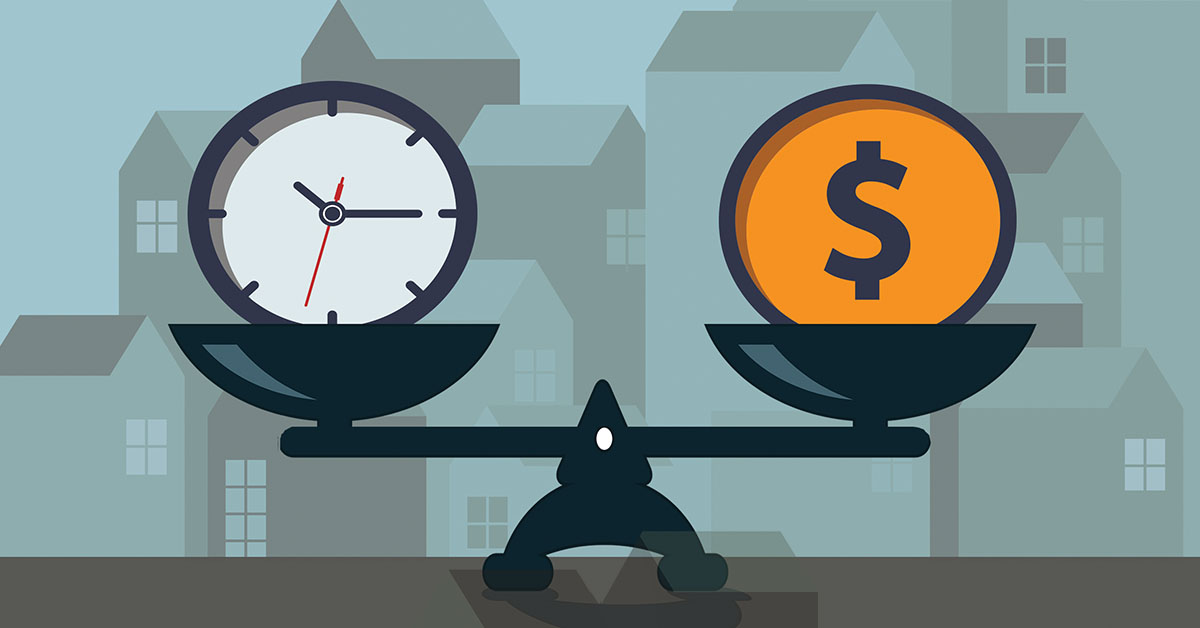Experts have long said that there’s a cost to waiting to a buy a home. That’s certainly true in a rising interest rate market. There is a misconception that as housing prices stabilize, or even decrease, that there will be a substantial savings in the buyer’s monthly payment. This may not be the case.
Today’s housing climate is typical of the cycles the mortgage industry has seen over the past 50 years, with simple supply-and-demand factors being a key factor in the sharp appreciation in home prices. Consumers may delay buying a home to save more money for the downpayment or with the hope that prices will come down.
Even if home prices do decline, the monthly housing payment may not fluctuate like consumers and even some mortgage originators expect. This is the time to educate borrowers and show them that waiting may not be the financially sound choice.
Futile battle
If a crystal ball existed in the real estate and mortgage businesses, it would be worth trillions. Without that, industry veterans need to make reasonable assumptions. In this case, consider two scenarios: one where housing prices stabilize and interest rates rise, and another where housing prices fall and interest rates rise.
Buyer education has seemingly become an afterthought for some mortgage companies and loan originators. The consumer is left to trust Google for one of the most important purchases of their life.
If a borrower takes out a $300,000 loan with a 3.5% rate, then the monthly payment for principal and interest would be $1,347. The same loan size with a 4% rate would mean that the borrower would pay $1,432 per month.
So, if this person delays in purchasing a home and prices decline, would they save money? Not necessarily. Let’s say that the borrower obtains a loan for $265,000 and the interest rate rises to 4.5%. The monthly payment for principal and interest would be $1,343. And if interest rates rise to 5%, the monthly payment on that $265,000 mortgage would be $1,423.
You don’t have to go back too far to envision interest rates rising to these heights. A little less than four years ago, rates were hovering just below 5%. So, what is everyone waiting for?
There have been times over the years when
home prices have dropped substantially when looking at inflation-adjusted dollars, according to an analysis by Observations, a personal-finance blog. These events occurred in the 1920s, 1940s and 1980s with declines of 10% to 15%, and once again in 2008 with a drop of 35%. This means that the average buyer who is waiting is hoping to find that once-every-25-years spot to put their money in the market, and even then, is hoping that they find the bottom. The bottom only comes when prices start increasing again, so it’s a futile battle.
Opportunity cost
Today’s market presents something very different. In 2020 and the first half of 2021, there were 2.1 million new households formed in the U.S., according to the National Association of Realtors. In December 2021, the nation was on pace to build only 1.7 million new homes, based on the number of starts, according to the U.S. Census Bureau. This presents an interesting dilemma for the rising-rate environment and a housing market that draws speculation from nearly every adult in the country.
With all this data, waiting seems to be the least logical thing to do and will likely only push the homebuyer further out of the market. In order to grow your business in 2022 and beyond as a loan originator, it’s vital that you study trends and understand the opportunity cost of waiting.
Buyer education has seemingly become an after-thought for some mortgage companies and loan originators. The consumer is left to trust Google for one of the most important purchases of their life. As the mortgage process becomes more automated, it is even more important for originators to use their experience to educate the consumer. Google is full of opinions from unknown sources, and graphs and charts that are left up to the viewer to decipher. More significantly, there is a lack of understanding of the mortgage and homebuying processes that clients will encounter.
Originators have to get in front of clients and take the time to explain what is about to come along with how to best compete for a home. All too often, the mortgage originator sits back and waits for their marketing campaign to produce a call or text before they take an order.
This is only conditioning the client to utilize their best buddy, Google, who then will inevitably come across a competitor’s ads for lower rates than you quoted. What Google won’t do is tell them about the 20-plus people and 10-plus businesses that work on their transaction over a 30-day period; how locking in their rate early provides for seamless underwriting and a predictable budget; or how they will save on their taxes due to the interest they are paying monthly. These are things that only a mortgage originator knows how and when to discuss.
Patient process
When potential buyers talk about rates going up and how this makes a home unaffordable, or how they want to wait for the market to correct itself, it’s crucial to have a deep understanding of the insignificance of any of these things happening. Knowing the remote likelihood of rates going so high or home values dropping so low that they make a real impact on a monthly budget, is both crucial to your business and in the best interest of clients.
Knowing that homes have become an essential part of retirement plans for people in this country makes it even more evident that homeownership, if you can afford the payment, is a must in any housing market that exists. Being different than your competition and standing out isn’t difficult, but it requires educating yourself and having patience in the process so that you can be the best possible mortgage originator for your clients. ●
-
Michael Sunnaa is CEO of Viewpoint Lending and managing partner at Lending 3. Sunnaa is a 25-year-plus veteran of the mortgage industry with a master’s in business administration who is currently working on his doctoral degree. His experience ranges from broker to banker to direct lender. Sunnaa has trained and managed more than 2,500 loan originators and continues to grow in changing markets.
View all posts







